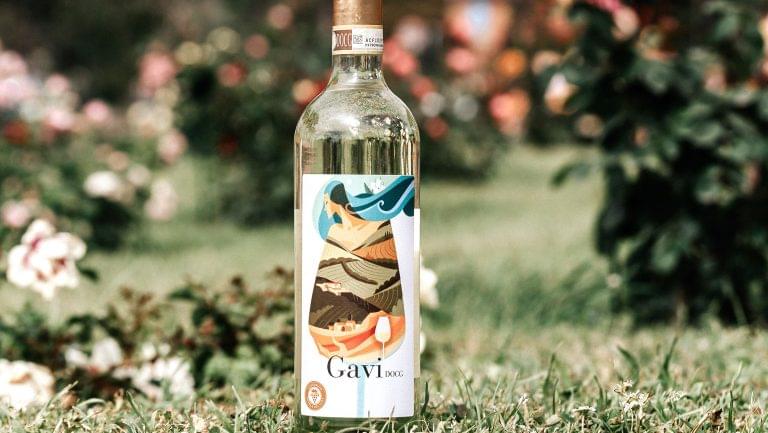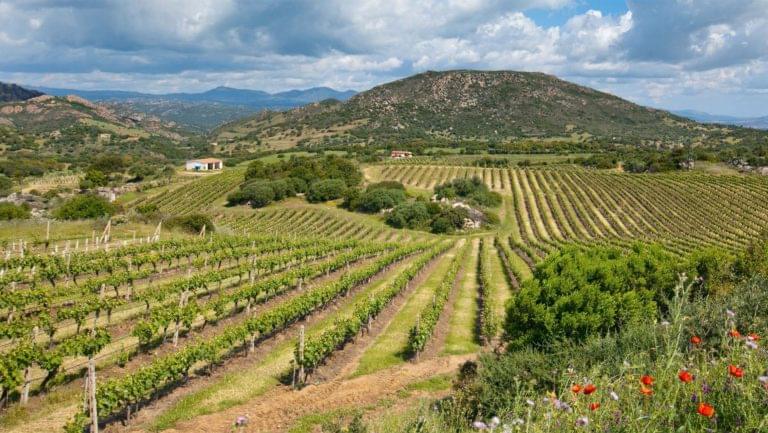This advertising content was produced in collaboration with our partner, Gavi DOCG.
White truffles shaved over fresh pasta, chocolate hazelnut cream spread across hot toast, and vineyards shrouded in fog at dawn: The delights of Piedmont in northwest Italy are myriad, including the region’s flagship white wine Gavi DOCG. Made from the Cortese grape, Gavi’s golden hue belies the wine’s elegance and minerality, qualities revered by the region’s ancient nobility.
Today, wine professionals recognize the value of including Gavi DOCG in their programs. This wine taps into several trends, including the enduring popularity of Italian wines, the fascination with indigenous grape varieties, and the appreciation for terroir-driven wines that pair well with food. Best of all, Gavi DOCG offers consumers great value for their money.
Trade professionals, along with members of the media, will have the chance to learn more about the merits of Gavi DOCG this year as the 2023 Gavi World Tour kicks off. Tastings, masterclasses, and seminars led by key opinion leaders will occur in cities worldwide, including New York City on August 30 at Midtown Loft & Terrace.

Don’t miss the latest drinks industry news and insights. Sign up for our award-winning newsletters and get insider intel, resources, and trends delivered to your inbox every week.
A Fresh and Iconic Wine
Gavi is the name of the denomination or Denominazione di Origine Controllata e Garantita (DOCG) and the wine made from the Cortese grape. Known for freshness and elegance, Gavi DOCG remains Piedmont’s most iconic still, dry white wine. Gavi is capable of various styles from youthful and lighthearted to age-worthy and sumptuous, as sparkling. Typically, Gavi DOCG wines offer fruity and floral notes, dancing from apple to peach to lemon, lifted by sprays of white flowers, framed in bright acidity.
Positioned along Piedmont’s southeastern corner bordering Liguria, Gavi DOCG covers an area stretching almost 4,000 acres and 11 municipalities in the province of Alessandria. Vineyards lay only a few miles inland from the sea and the famous city of Portofino. Not surprisingly, Portofino’s abundant seafood, vegetables, and signature dish, trofie pasta slick with basil pesto sauce, are fantastic pairings with Gavi DOCG.
Largely planted in the foothills, Gavi DOCG is formed by the convergence of plains and mountains, where alluvial soil meets rocky terrain atop a primoridal geological phenomenon. “The Gavi terroir is created by an ancient seabed of limestone,” explains Libby Burk, the wine director of Common Thread in Savannah, Georgia. “Limestone is present in some of the world’s most famous wine regions. It has good drainage, retains water, and benefits grapes with high acidity.” Atop the limestone, layers of red clay, white soils, marl, and sandstone alternate, adding further delineation to Gavi’s terroir.
Around the village of Gavi, some hills reach almost 1,500 feet, creating microclimates within a larger climatic zone that’s a semi-continental mix of Mediterranean breezes and cold air from the Apennine Mountains. “The elegance, freshness, and aromatics found in Gavi are due not just to the genetics of the Cortese variety, terroir, and the winemakers’ mindfulness, but also the climate,” says Burk. “Variances in temperature from night to day promote flavor concentration, while still preserving naturally high acidity.”
Gavi’s Positioning for U.S. Drinkers
For centuries, wine growers and the Genoese aristocracy recognized this area as the sweet spot for this noble grape. The history of Gavi wine dates to 972, and it has long been linked to affluent Genoese families. To preserve and promote this denomination, the Consorzio Tutela del Gavi was established in 1993. And, in recognition of its quality, Gavi was granted DOCG status in 1998.
Today, the Consorzio Tutela del Gavi boasts 190 producers and over 500 families contributing to wine production. With 85 percent of 14 million bottles exported to 100 countries worldwide, Gavi DOCG is thriving. Yet despite its long history and reputation for quality, Gavi DOCG continues to elude American drinkers.
It’s no secret that Americans have a soft spot for Italy and all things “Made in Italy.” For open-minded drinkers, Gavi can be an alternative to popular varieties like Pinot Grigio and Sauvignon Blanc.
“I’m fortunate to work at an Italian restaurant where people often leave it up to me to choose their wine because they feel slightly out of their element,” says Simon Kaufman, the lead sommelier at Sorelle in Charleston, South Carolina. “If they are looking for an Italian dry white, I always throw Gavi into the mix because it is a crowd pleaser.” Kaufman finds that guests who enjoy Sancerre, Chablis, or Italian Pinot Grigio, tend to enjoy Cortese.

In San Francisco, wine and spirits director of Vine Hospitality, Serena Harkey, thinks Gavi deserves more space on restaurant wine lists for three reasons. First, Harkey likes the versatility Gavi offers at the table. “Gavi pairs well with a variety of dishes,” she says. “Its crisp acidity and citrus notes make it a refreshing complement to seafood and light pasta dishes, while its fuller body and nutty undertones make it a great match for heartier dishes like roast chicken or veal.”
Gavi’s Excellent Value Proposition
Second, Harkey believes Americans’ lack of familiarity with the region should be treated as an asset by sommeliers and retailers. “Gavi is relatively unknown, which makes it an exciting option for diners looking to explore new and interesting wines,” she says. Finally, Harkey thinks Gavi DOCG offers great value for quality. “Gavi is often less expensive than other Italian white wines like Pinot Grigio or Vermentino, but it offers just as much complexity and flavor.”
Vonda Freeman, the wine director for Charleston restaurant group Indigo Road Hospitality, drives home Gavi DOCG’s value proposition. “From a price point perspective, Italian wines have been able to maintain a better range in the U.S. than wines from France,” she says. “You can find Gavi under $20 to $25 retail, and on wine lists for $45 to $60, which is great value for a fine wine. Fewer Americans know about it, but as people are becoming more educated on Italian varieties, and Pinot Grigio drinkers want to try something different, it’s an excellent suggestion.”
Freeman notes that once guests taste Gavi DOCG, they tend to love it. These positive experiences help build trust with diners, a win-win for the business, consumer, and region.
Gavi DOCG wines are food-friendly, offer great value, showcase unique terroir, and have a heritage story that’s distinctly Italian. For these reasons, sommeliers and retailers should turn to Gavi DOCG to add value and discovery to their programs.

Dispatch
Sign up for our award-winning newsletter
Don’t miss the latest drinks industry news and insights—delivered to your inbox every week.









